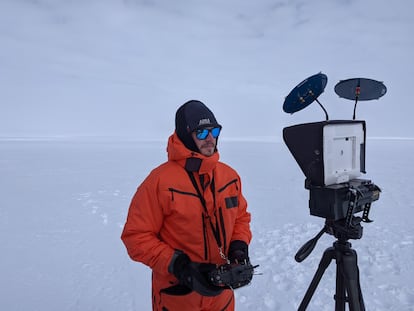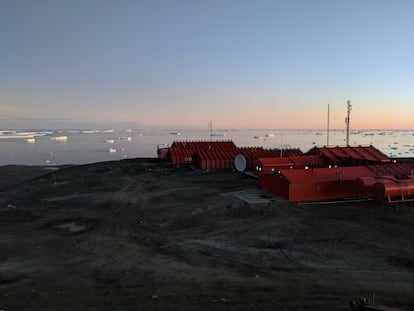
The power of penguin guano to reduce the effects of climate change in Antarctica | Science
At Marambio Base, in the heart of the Antarctic Peninsula and under Argentine Air Force control, the cold and icy breeze shape the landscape of a polar desert. The island is rife with permafrost, rocks, and silent storms, which carry neither thunder nor lightning in their wake. It is also home to Adélie penguins, who typically gather in colonies of 60,000 members, eight kilometers (five miles) from the main scientific station in the trans-Andean country, which has been operating for a decade.
While they gather in that wasteland of ice and rock to live together, find mates, and start families, the penguins may also be unwittingly helping to mitigate the effects of climate change, a previously unknown impact on the environment. The fecal waste these animals scatter (known as guano) releases ammonia into the area, an essential compound that influences the increased formation of certain types of clouds that act as insulating layers in the atmosphere, according to a study published in the journal Nature.

Matthew Boyer, a researcher at the University of Helsinki in Finland, and his colleagues explored Antarctica to understand how this colorless but foul-smelling gas, produced naturally by the slow decomposition of organic matter, has the potential to contribute to reducing surface temperatures. “Our work involves studying the gases that influence the formation of particles in the atmosphere,” Boyer tells EL PAÍS.
The analysis is based on the concentration of ammonia in the air between January and March 2023. Levels of this gas are extremely low, meaning that any source of this element — whether emitted by the ocean or by local animals — can have a significant impact. One of the study’s conclusions is that the waste of this seabird, which feeds on krill and small fish, releases large volumes of ammonia into the atmosphere, which promotes the creation of small particles called aerosols.
Ammonia can increase the formation of these suspended particles in the air, which provide water vapor with a surface on which to condense, leading to cloud formation. But clouds, depending on their type, impact the climate in different ways. In some cases, they reflect sunlight back into space, cooling the surface. In others, they trap radiation, which contributes to warming. “This interaction is complex and depends on many factors,” the scientist emphasizes.

The researchers also noticed that when the wind blew from the direction of a colony, the ammonia concentration increased to 13.5 parts per billion. This effect persisted even after the penguins migrated from the area in late February. At that time, the amount of ammonia remained more than 100 times higher than the baseline. The remaining guano continued to emit the gas.
The seeds of the air
Ocean gases undergo chemical transformations in the atmosphere, producing compounds such as sulfuric acid, which, when interacting with ammonia, can initiate the formation of new particles. The key finding was that while sulfuric acid alone could form them, the presence of ammonia accelerates this process “up to a thousandfold.”
This is important because the rate of particle formation determines how many reach the atmosphere. These particles act as seeds, around which cloud droplets called condensation nuclei form. “So, the greater the number of particles, the greater the likelihood of clouds forming,” Boyer explains.
University of Cádiz doctor Erica Sparaventi points out that the study highlights that each organism and component of the ecosystem “offers a different service.” “The power of guano planting was already known, but on land, on terrestrial plant communities such as moss and lichens,” she explains.

Sparaventi has been able to verify this directly through her work on the PIMETAN project, which investigates the role of penguins in recycling metals and nutrients in the Southern Ocean. “We have seen that guano, when introduced into the waters near colonies, can introduce trace metals essential for phytoplankton development,” says the expert, who was not involved in the research.
The planktonic plant population — which includes microscopic algae — is found at the base of the Antarctic food chain and also plays a role in the biological carbon pump. “Phytoplankton absorb carbon dioxide from the atmosphere, transforming it into organic carbon that will be absorbed,” says the scientist.
According to Boyer, in science, hypotheses are built based on data, but more evidence needs to be gathered to make inferences. Still, the results of the analysis open a fascinating door. “Penguins can influence particle formation,” concludes the lead author of the study, “which likely affects cloud formation.” The next step will be to directly measure the radiative properties of these clouds to understand their impact on climate.
Sign up for our weekly newsletter to get more English-language news coverage from EL PAÍS USA Edition


